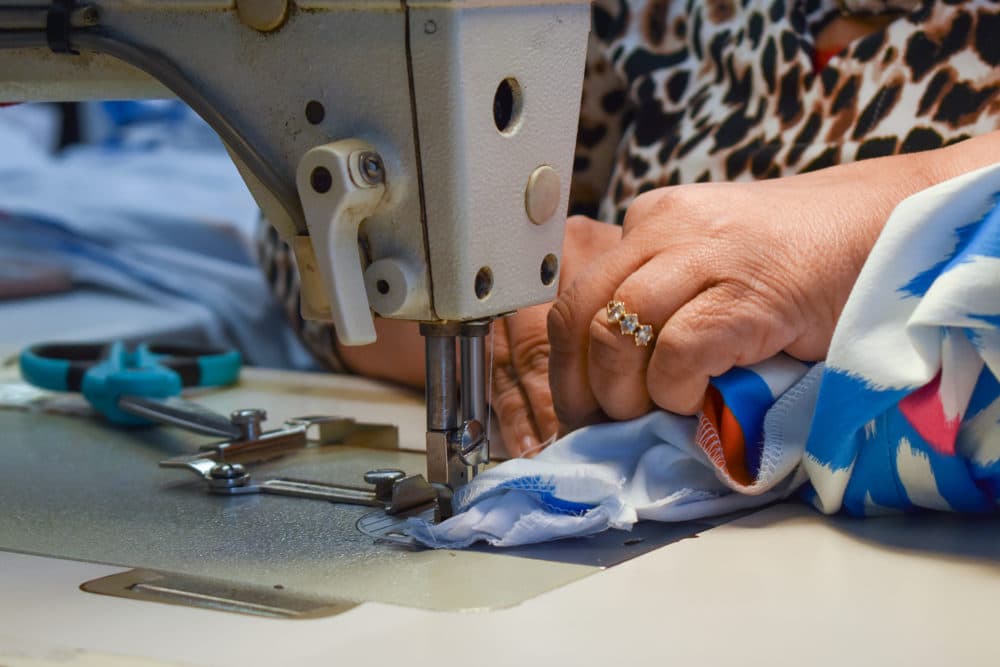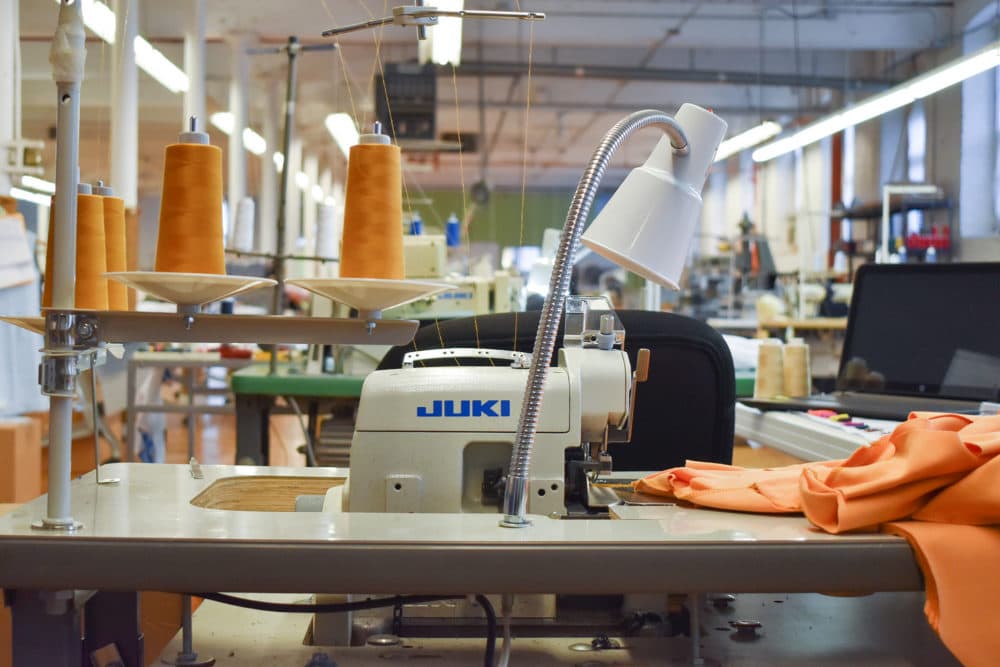Advertisement
What It Takes To Make Clothes In The USA
Resume
More than 95% of the clothing sold in the United States is imported from abroad — but recent data shows “Made in USA” is trying to make a comeback.
Production rapidly shifted away from the U.S. in the 1990s, when about half of the nation’s clothing was domestically manufactured, says Pietra Rivoli, an economist at Georgetown University and author of “The Travels of a T-Shirt in the Global Economy.”
In the ‘90s, trade rules “liberalized” with key changes like China joining the World Trade Organization, she says.
“The U.S. went from having quantitative limits on how much apparel could be imported from a variety of countries to having those limits go away,” she says. “Basically, the gate kind of opened.”
But over the past few years, data shows a slight uptick in clothing production in the U.S. Rivoli says there are a few reasons for this shift back home: Manufacturing clothing in the U.S. allows companies to avoid issues with transportation, trade barriers, logistics and waiting for goods to arrive.
For years, companies calculated that they could achieve much lower costs by moving apparel production to China, she says, but that isn’t the case anymore thanks to rapidly changing technology.
Making clothing used to be a labor-intensive process that required many workers using sewing machines, so production moved to Asia because of the region’s lower wages, she says. Various parts of the process have now been “mechanized,” she says, which gives companies less incentive to move abroad.

For example, when Rivoli studied T-shirts 15 years ago, manufacturers figured out how to knit the body of a T-shirt inside a tube. Older T-shirts have stitches down the sides that indicate a person sewed it together, but now machines have optimized the process, she says.
Now, manufacturers can make products like socks and pillowcases without paying someone to sit at a sewing machine — a trend she expects will continue.
“Automation doesn't mean bringing jobs back,” she says. “It means bringing production back.”
It’s still cheaper to manufacture clothing in Asia than in the U.S., she says, but as more companies turn to machines to make clothes, the cost advantage will tilt back to the U.S. and similar countries.
Rivoli says among U.S. consumers, there’s a small group who want to see more “Made in USA” tags in their wardrobes. That creates a market for companies looking to manufacture apparel at home instead of elsewhere, she says.
“I do not think all apparel production is going to be back in the United States,” she says, “but I think there is a competitive space in this industry for companies that can be quick and close to their customers, and address some of these trade policy uncertainties.”
Peter O'Dowd produced and edited this interview for broadcast with Kathleen McKenna. Allison Hagan adapted it for the web.
This segment aired on January 17, 2020.

